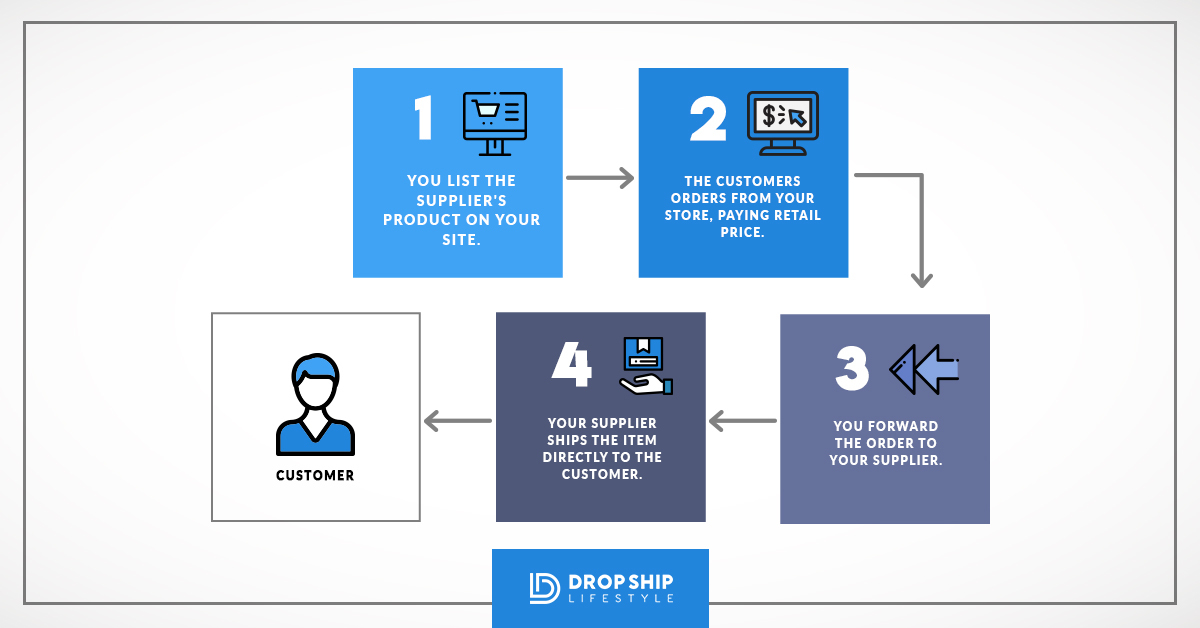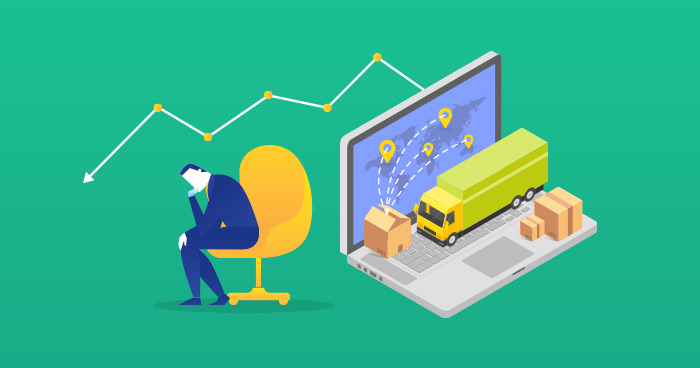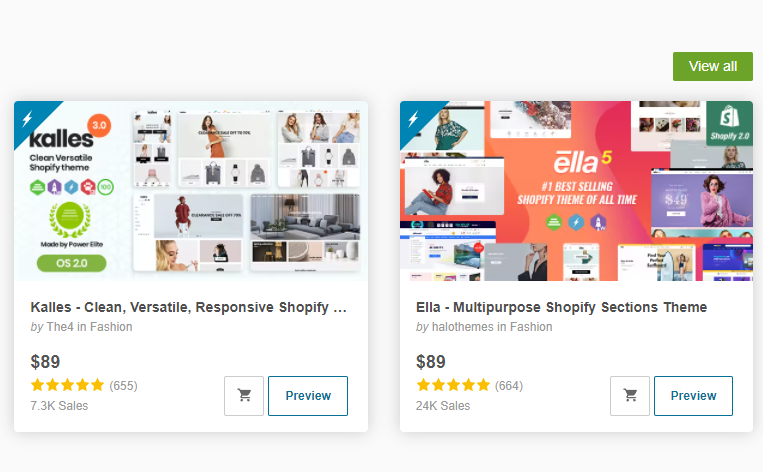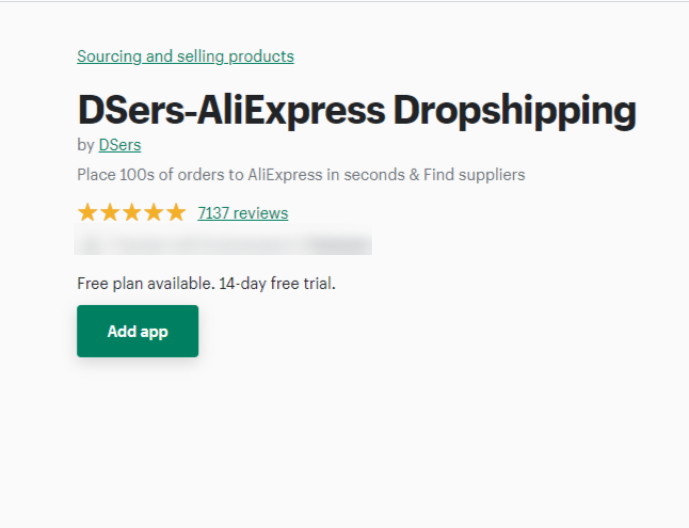Why Dropshipping Is A Bad Idea And Why You Should NOT Dropship
Have you ever had to take the blame for someone's else fault? That's one of the risks why dropshipping is a bad idea to some people. The easy setup advantage is also a disadvantage when examining dropshipping more closely.
Since you are acting as a link between the customer and the supplier of the product, there are chances that the supplier makes mistakes. When such happens, the dropshipper is the first point of contact. You accept full responsibility for the success/failure of each customer sale.
That is why we encourage folks to understand dropshipping before getting started properly. Ready to learn the art of dropshipping? Keep reading this article.
Related blog posts:
- 3+ Best dropshipping books
- Why dropshipping is a good idea
- Common dropshipping mistakes
- Finding the best Shopify dropshipping app
- Best Shopify SEO apps
- Best eCommerce books to build an eCommerce empire
- 5+ Best social marketing books
- Top 5 books on business mindset
- Top 5 best books to learn SEO
- What is digitalization in marketing
- What is personalized direct mail
- What is Shopify and how does it work?
- Why social proof is important
1, What is Dropshipping And Understanding The Definition of Dropshipping
Dropshipping is a business order completion approach where an online retail store receives customer orders and forwards them to an external wholesaler/supplier before they are shipped to the customer in the store's name.
The above dropshipping definition alludes to one thing – that there are 3 different parties involved. The customer, the retailer (dropshipper), and the supplier/wholesaler. Therefore, the success of a sale depends on the interactions between these parties, particularly between the dropshipper and the supplier.
That is where dropshipping becomes tricky. You can do everything right but will still have to wait on the supplier to play their part perfectly. It even gets trickier since the customer is not expected to be aware of the involvement of a third party in the sales process.
All things being equal, the customer views your product and orders from you. The shipment then arrives in your store name. While there is more to the process, that's all the customer should see.
It's essentially a process that favors the customer and wholesaler but not the retailer. That's because success is not entirely dependent on your efforts as a dropshipper.

Source DropshipLifestyle
2, Understanding dropshipping: The Customer-Retailer-Wholesaler Concept
Before giving reasons why dropshipping is a bad idea, it is necessary to understand the dropshipping model. An excellent approach is a customer-retailer-wholesaler concept. It is a model that attempts to explain the role of each party when a customer order is received.
Firstly, the customer reaches out to a retailer, who happens to be you. You then reach out to the wholesaler/supplier. That is why many people refer to retailers as middlemen.
The retailer as dropshippers does not usually have a product warehouse. Hence, when the customer orders come in, they take their part of the payment and forward the order details to the supplier/wholesaler.
It has its advantages, such as lower operating costs since they do not have to manage a warehouse. Additionally, it also implies that the dropshipper is wholly dependent on the ability of the supplier to have quality products in stock. That's a lot of risks that not everyone is willing to take. Like, why would the success of your business be dependent on another's?
3, Challenges: Why dropshipping is a bad idea?
"Most dropshippers are emotional. They are inexperienced and don’t have the risk-taking ability. They get excited seeing that someone else is making money online so they should too. And then they start their own store without testing or even doing a feasibility study."
"When in the first few months, they don’t get profits, they realize the whole business idea isn’t for them. So, they drop it and move to something else complaining that dropshipping doesn’t work for anyone, generalizing their own assumptions."

Source - CloudWays
3.1, Minimal profits
One wrong assumption is that the absence of running costs for physical structures implies high profits. Dropshipping is not precisely that perfect quick money scheme. As a dropshipper, your profit is limited because you do not buy at the wholesale discounted rates for bulk orders. Dropshipping purchases are per customer demand basis.
There is also the issue of having to pay supplementary charges for shipping. That's asides from the other expenses like advertisement costs, site maintenance, and search engine optimization of online stores.
Hence, a lot of startups struggle to develop their dropshipping skills. The profit can be marginal, especially when you are just getting started.
3.2, Supplier errors
Another reason why dropshipping is a bad idea is how much the supplier/wholesaler influences the overall success of each sale. Unlike the traditional business setup where you accept customer complaints and work on them to avoid reoccurring issues, dropshipping is different.
Even some wholesalers purposely reduce packaging quality, probably to make more profits. However, the bulk of the complaints falls on the dropshippers – since they are the middlemen. Resolution of such complaints will also depend on how quickly the customer-retailer-wholesaler communication is made. You have to forward the complaints to the supplier before getting back to the customer.
Therefore, the dropshipping process favors the wholesaler over the retailer/dropshipper. Getting good reviews and feedback is not totally in your control, which is a significant limitation.
3.3, High shipping costs
There is always the tendency of high shipment costs, especially when you buy from multiple wholesalers. For example, imagine a customer ordering products A, B, and C, which Company D, Company E, and Company F sells, respectively. The problem occurs when you have to pay for individual shipments rather than collective ones.
According to the customer, the whole order was made on your online store, and they do not expect the shipment fee to be high. That would mean you pay part of the shipment because high shipping fees are a leading factor that contributes to cart abandonment.
3.4, Highly competitive
Dropshipping can be a terrible business idea if one wants to make quick money. That is because of the high level of competition among several niches. There is a low entry barrier into the dropshipping business, which encourages many people to get started. The implication is fierce competition from the dropshippers that have been selling for a long time.
As more prominent business names, they can sell at low, competitive prices while making enough profits. Since they sell the same products, customers are left with no choice but to buy the same products at a lower price.
3.5, Dropshipping inventory is not guaranteed
Another reason why dropshipping is a bad idea is the uncertainty of available stocks. The retailer-wholesaler dropshipping model allows the wholesaler/supplier to take full responsibility for stocking up products.
That opens up the possibility of a customer ordering for an already out-of-stock item. While such scenarios rarely occur, it causes customer dissatisfaction when they eventually find out. Some wholesalers understand this, and they now offer APIs that help you view their updated stocks in real-time.
3.6, Dropshipping is not actually easy
Yes, you read that well. We know you must have heard many people say dropshipping is one of the easiest business models. There is no lie about that. However, the idea of a flexible startup that requires zero to little effort to get started is entirely wrong!
A lot of planning is involved, which is why dropshipping is a bad idea for lazy people. You will create distinct and unique sale copies and ensure you have photos that reflect the exact products.
Marketing and advertisement costs are other variables that matter too. Good publicity helps you stand out from numerous sellers within the same niche. Altogether, dropshipping is not as good an idea as some people put it. Nevertheless, it's worth trying out if you have the interest.
3.7, Dropshipping inventory is not guaranteed
Another reason why dropshipping is a bad idea is the uncertainty of available stocks. The retailer-wholesaler dropshipping model allows the wholesaler/supplier to take full responsibility for stocking up products.
That opens up the possibility of a customer ordering for an already out-of-stock item. While such scenarios rarely occur, it causes customer dissatisfaction when they eventually find out. Some wholesalers understand this, and they now offer APIs that help you view their updated stocks in real-time.
4, How to make dropshipping work for you
Considering different reasons why dropshipping is a bad idea, it's noteworthy also to understand that some individuals still live off it. Like other business models, there are ways to manage the challenges with dropshipping.
4.1, Carry out market research
If there is one benefit of dropshipping over other business models, it is easy to study the market without risks. Are there too many competitors in the niche you want? Do you sell product A and think product B would thrive well for the same customer base?
Answer your questions by putting them to a practical test. Rather than stocking up and spending on warehouse maintenance, dropshipping helps you try new products out on your online store.
The trial method with new products is safe because it's either you buy and sell, or you don't sell at all. Dropshipping is based on buying after the customer orders, so nothing to lose.
4.2, Avoid overselling
No matter how experienced you are, certain business factors remain beyond your control as a retailer/dropshipper. One of such is the frequent fluctuations in the cost of commodities. While we have analytical tools that provide market trends and predict future ones, it's also best to play safely in the market.
Do not allow yourself to be tempted to ignore the dropshipping model and order more than the stocks required by the customer. Trying to oversell might go wrong if the prices of those commodities drop before the customer orders for them.
There is also the risk that the stocked-up inventory gets damaged, burnt, or even attacked. Hence, as a dropshipper, stick to the fundamental model. Avoid overselling products.
Learn How to add a product to Shopify that sells.
4.3, Use shipping software & avoid multiple suppliers
Without proper planning, shipment costs can make you start considering if dropshipping is a good idea at all. That occurs when you have multiple suppliers for products within the same niche. The dropshipping concept hides the existence of the third-party wholesaler from the customer.
Hence, a situation might arise when they make orders from different wholesalers/ suppliers far from each other. That means a higher shipment cost.
Also, dropshipping can be utilized by the average traditional seller who has expanded their business and is beginning to struggle with delivering customer packages themselves. Switching over to a dropshipping model and using automated shipping software will simplify the process.
4.4, Good customer support
Forwarding the customer's order details to your wholesaler/supplier should not be the final sales stage. It is necessary to have a simple support platform to receive customers' questions until they get their orders. You can also create an avenue to obtain feedbacks to know what products are selling better and which of your wholesalers/suppliers are not doing well.
Happy customers are what keep a business moving. Also, excellent customer service might sometimes help avoid some product returns and is essential to building long-term customers.
4.5, Use an attractive website design
Imagine entering a grocery store that's littered with no receptionist, and items for sale are not correctly arranged. There is also no attendant to assist. You will probably get disappointed and walk out. That's what customers feel when your dropshipping store has an unattractive web design.
The dropshipping website design is the first impression of a prospective customer concerning your business. It should be easy to navigate and search for products. Hence, the appearance and arrangement of the items on your website speak volumes. It affects the success rate of your dropshipping store.
 Shopify Themes
Shopify Themes
5, How to choose the best dropshipping supplier
If you have followed through this dropshipping guide, you will agree that there is considerable reliance on the dropshipping supplier. That explains why dropshipping is a bad idea to some. Timely delivery of products, quality assurance of ordered items, and even compliance to legal laws are all dependent on the wholesaler/supplier.
Thus, the supplier plays a big role, and that is why you must carefully select one when getting started. You must do a background check on the supplier before entering into a contract with them. Ask questions like:
- What kind of reviews have they received from other businesses?
- What are their shipment and delivery policies?
- How does the wholesaler manage returned orders?
- Is the wholesale company legally certified?
- How is their support system in case you have a complaint?
You see, taking your time to get answers to these questions will save you a lot of hassle later on.
 DSers on Shopify
DSers on Shopify
Before wrapping up, below we’ve briefly covered popular dropshipping questions that may help you understand why dropshipping has many negative connotations attached to it.
6, What is the hardest part of dropshipping?
The hardest part of dropshipping is the length of time it takes for the product to land at the customers’ door.
Let’s rephrase this a little better; You’ve built an aesthetically pleasing store, the UX, the product, and customer retention strategies are all on point, but it takes 15 to 30 days for the product to be delivered!
Ok, now imagine, a user visits your store, with the intention to buy a watch. At this point, there are two questions that the user wants to know: “How much is it”, and “How long will the watch take to be delivered”.
Obviously, from a customer’s perspective, when they want something, they want it now.
Your goal is to ensure that your product can be delivered in a respectable time frame, it’s too easy for a potential customer to Google and find better delivery options.
7, Why is dropshipping unethical?
Dropshipping is not unethical per-se, but rather the people that leverage the dropshipping business model are unethical.
You see, the vast majority of dropshippers only care about one thing, the money!
In all reality, if fake gurus constantly release statements of: “In 30 days you could be earning $1000 per month on autopilot”. Then unfortunately it’s going to attract many who simply don't care about the customer journey, customer service, or the quality of products.
However, we don’t want to tar everyone with the same brush, because there are thousands of legitimate dropshippers providing stellar services.
So, to reiterate, dropshipping is not unethical, and can be a solid business model, but only if you focus on providing a quality service.
8, Why is dropshipping badly perceived?
Dropshipping is badly perceived primarily due to the many fake gurus promoting how easy is to make money online and not to mention the plethora of pop-up stores trying to sell cheap products with little regard for the customer.
Amongst the thousands, upon thousands of dropshippers, you’ll only find a small percentage focusing on the customer first - these are the ones that will succeed.
9, How to choose the right dropshipping products to sell?
Whilst dropshipping is a bad idea for those that participate in unethical practises, dropshipping will work for those that treat dropshipping as a real business.
When continuing down the path of dropshipping, you must spend considerable amount of time understanding product demand, and sourcing quality products.
Below we'll highlight how to choose the right products for dropshipping:
9.1, Research your target market
The first step in selecting the right products for your dropshipping business is to research your target market. You need to understand your customers' needs and preferences, including what products they're interested in and how much they're willing to pay for them. Use tools like Google Trends, Amazon Best Sellers, and social media to research what products are popular among your target audience.
9.2, Choose products with high demand and low competition
Selecting products with high demand and low competition is key to the success of your dropshipping business. If you choose products that are highly competitive, it will be harder to make sales, and your profit margins will be lower. Use tools like Google Keyword Planner, Ahrefs, and SEMRush to research keywords and identify products with high search volume and low competition.
9.3, Look for products with high profit margins
Choosing products with high profit margins is essential to making a profit in your dropshipping business. You need to select products with a low cost of goods sold (COGS) and a high retail price. Look for products that have a markup of at least 30% to ensure you make a profit after accounting for marketing and shipping costs.
9.4, Consider product size and weight
The size and weight of the products you sell can impact your shipping costs and profitability. Choose products that are lightweight and easy to ship to reduce your shipping costs. Avoid products that are bulky or require special handling, as they can be expensive to ship.
9.5, Select products that align with your brand
Choosing products that align with your brand is essential to building a strong brand identity and attracting loyal customers. Select products that fit your niche and brand values and are consistent with your marketing message. This will help you build a strong reputation and stand out from your competitors.
The Takeaway
Depending on how you view it, there are many reasons why dropshipping is a bad idea. As many business pundits describe, we have seen that it's not a perfect model. However, that does not dismiss the potential of doing dropshipping the right way.
There are ways to tackle the dropshipping challenges like any other business setup. The first thing is to ensure you have an interest. Dropshipping is not a quick get rich business model. You have to develop, build and maintain your brand carefully. Also, be prepared to try out different alternatives that come to mind.
To summarize we've briefly covered:
- What is Dropshipping
- Understanding dropshipping: The Customer-Retailer-Wholesaler Concept
- Why dropshipping is a bad idea
- How to make dropshipping work for you
- Benefits: Why Dropshipping is a good idea
- How to choose the best dropshipping supplier
- The hardest part of dropshipping
- Is dropshipping unethical
- Why dropshipping is badly perceived
What next:
- Why dropshipping is good
- Dropshipping mistakes to avoid
- How to increase Shopify traffic
- How to add a product to Shopify the right way
- Dropshipping apps for Shopify
- Share this post, every little helps.
- Subscribe to our newsletter below for tips and tricks to help boost sales.
Shopify tutorials:
- Shopify log in: How to login the right way
- How to change your domain name on Shopify
- How to upload a sitemap to Shopify
- How to add a product to Shopify the right way
- How to change collection URL in Shopify
- How to create a drop-down menu in Shopify
- How to create a collection in Shopify
- How to add a blog to Shopify
- How to add meta tags to Shopify
- How to remove powered by Shopify
- How to add users to Shopify
- How to add a logo to Shopify
- How to edit the order confirmation email in Shopify
- How to turn off the Shopify abandoned cart email
- How to hide products on Shopify
- How to duplicate your Shopify theme
- How to add custom CSS in Shopify
- How to add an order fulfillment center to Shopify
- How to create a custom section in Shopify
- How to add notes in Shopify
- Shopify pricing plans - A Guide to Shopify Fees
- What is Shopify?
- What is MyShopify?
Additional Shopify Resources
With Shopify being one of the largest eCommerce platforms on the market means you’ll never be short of resources to learn how to build a profitable eCommerce business.
Kanteneo aims to be the best Shopify blog on the market, but you may require additional resources to help you on that journey. Below we’ve listed a top-selling Shopify book by Veronica Jeans to help you learn how to launch a profitable business.


